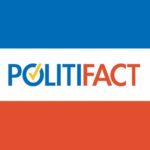Game Changer
The CBO projects the effects of repealing the individual mandate
In November 2017, when Congressional Republicans proposed to end the individual mandate as part of a reconciliation bill, the CBO had occasion to look at the mandate’s effect on insurance enrollment aside from influences it took into account for its projections for the GOP’s attempts to reform health care.
The CBO projected that repeal of the individual mandate, by itself, would result in 1 million fewer people enrolled in Medicaid as of its second year. By 2027 that loss would grow to 5 million. For overall insurance coverage, the CBO credited repeal with 4 million fewer for the second year and 13 fewer by 2027 (see CBO Table 2, below). The CBO pegs its estimates of insurance losses to a baseline projection based on current law.
In its projection, the CBO anticipates that mandate repeal will result in a higher-risk insured population. Insurance companies would hike premiums to cover higher per-insured costs. Higher premiums would discourage many from buying insurance. But people dropping out of Medicaid, which typically carries no costs for the insured, would not likely drop out because of the high price of Medicaid. Rather, they drop out mostly because the threat of the individual mandate penalty ends.
With the new CBO report, the fact checkers finally found themselves able to focus on the individual mandate’s effect on insurance coverage. Fact checks of claims about the proposed reconciliation bill appreciably reflect the CBO’s reasoning.
PolitiFact (PolitiFact New York), checking an insurance claim from Andrew Cuomo:
Christine Eibner, a health policy analyst with the RAND Corp., said it’s “reasonable” to argue that the disenrollment from Medicaid would be voluntary, since price would not be a factor for beneficiaries. This would account for 1 million fewer Americans with insurance in 2019 and 5 million fewer in 2027, the bulk of them “voluntary.”
We do not know why PolitiFact New York used quotation marks at any point in the above paragraph. It is okay to use the same word an expert used, “reasonable,” when paraphrasing the expert, and the AP Stylebook tends to discourage using partial quotations. PolitiFact New York’s decision to place “voluntary” inside quotation marks counts as an even deeper mystery.
PolitiFact New York’s reporting makes clear that PolitiFact acknowledges some effect on Medicaid of repealing the individual mandate. Why do PolitiFact’s earlier fact checks continue to omit that information?
The Washington Post Fact Checker, checking an insurance claim from Charles Schumer:
Unlike previous GOP plans, the tax plan would make no changes to Medicaid. So why does CBO predict enrollment in Medicaid would be 5 million lower than expected in 2025? The CBO believes that, for a variety of reasons, the mandate induces individuals to seek out health insurance and that includes Medicaid. So, without the mandate, fewer people in theory will end up on Medicaid.
The Washington Post Fact Checker’s reporting makes clear that it acknowledges the effect on Medicaid of repealing the individual mandate. Why do the Fact Checker’s earlier fact checks fail to explicitly mention that aspect of the CBO’s projection?
FactCheck.org fact check of Democratic talking point:
But, again, they wouldn’t all be booted or knocked off the insurance rolls.
In 2025, if the mandate was rescinded, an estimated 5 million fewer people would be enrolled in Medicaid; 5 million fewer people would get insurance through the nongroup or individual market; 3 million fewer people would get insurance through their employer; and as many as 500,000 fewer would no longer have some other form of health insurance.
In FactCheck.org’s summary paragraph, it notes that “perhaps” most of the projected decrease in the number of insured—compared to the current law baseline—would not be “kicked off” insurance as the Democrats had claimed. We think “likely” fits the bill better than “perhaps.” Five million of that 13 million came from Medicaid and 6.5 million were billed for shared responsibility payments in 2015. One might whittle that 11.5 billion down some through overlap or other factors, but even just 7 million of 13 million counts as most.
Like the other elite fact checkers, FactCheck.org now acknowledges the effect of on Medicaid of repealing the individual mandate. Why does that information remain missing from its earlier fact checks?
One Other Nagging Question
Why did all three of the “elite three” mainstream media fact checkers omit from their reports the CBO’s explanation of the individual mandate’s impact on Medicaid enrollment?
We think fact-checking journalists, like other mainstream media journalists, tend to create and follow narratives. When the GOP tried reforming health care early in 2017, fact checkers sustained the narrative that the reform would tend to lower the number of people with insurance. With that narrative supported, the fact checkers felt little need to dig more deeply into the CBO’s assessments.
Fast forward to November 2017 and the narrative remains the same, but the CBO report required less digging to get to the information challenging that dominant narrative. The fact checkers were obligated to report the obvious, though each arguably downplayed it in their reporting.
We would like to see mainstream media fact checkers do a better job of fact-checking.




